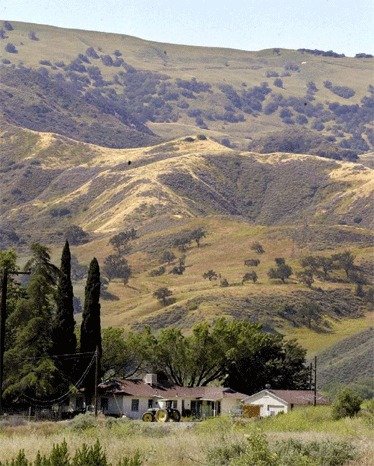The US Environmental Protection Agency and Army Corps of Engineers resolved their differences and advanced one of the largest sprawling developments ever contemplated in California on 12,000 acres along the Santa Clara River in northwest Los Angeles and eastern Ventura Counties. Newhall Ranch would create a city for 60,000 on a six-mile stretch of the wild, open, agricultural, free-flowing river flood plain.
Corps of Engineers and EPA: Let the Sprawl Begin

The case has gone back and forth in the environmental review process and then the courts since 2009, but the project has languished for decades facing major opposition and a series of bankruptcies.
Earlier in 2011, the EPA questioned whether the U.S. Army Corps of Engineers, the permitting agency, had adequately considered the threat of flooding caused by building in the Santa Clara River flood plain, an area most recently inundated during rainy-season storm events in 1983 and 2005. The agency also questioned effects on water quality, cultural resources, endangered species and downstream communities.


Location of the Newhall Ranch development | Map via the California Department of Fish and Game
According to the Center for Biological Diversity and three other conservation organizations who have filed suit, approvals by State Fish and Game in 2010 and this recent decision authorize filling of the Santa Clara River and its floodplain on a massive scale. It would further bury or concrete line many miles of tributary streams. Native American burial sites, sacred places and cultural natural resources would be unearthed and desecrated. Habitat for the endangered California condor would be impacted. As well, development would require destruction of about one quarter of the San Fernando Valley spineflower population — a species found in only one other location.


The EPA-Corps accord would reduce effects on streams to 48 acres; eliminates a plan to bury Porter Canyon creek; bans new oil or gas extraction on the property; and sets aside 115 acres of flood plain as mitigation for 110 acres to be used for commercial outlets and 140 homes. Unfortunately, these measure only mitigate a fraction of the impacts expected along the river and the Santa Clarita Valley from this mega-development.
The Clean Water Act permit has been under review for more than a decade. The project’s next hurdle is the Los Angeles Regional Water Quality Board.
The Santa Clara River is one of the few major Southern California rivers remaining in a relatively natural state. It flows for about 116 miles from its headwaters on the north slope of the San Gabriel Mountains to its confluence with the Pacific Ocean between Oxnard and Ventura; its watershed is home to a great diversity of rare species, including the unarmored threespine stickleback, the California condor, the least Bell’s vireo, southwestern willow flycatcher, California red-legged frog, arroyo toad, southern steelhead trout and the San Fernando Valley spineflower.
“We believe the Department of Fish and Game has much better alternatives for permitting stream alterations for Newhall Ranch,” said Ron Bottorff, chairman of Friends of the Santa Clara River, in the CBD press release last January. “Approvals would result in unacceptable impacts to some of the finest riparian areas to be found anywhere in Southern California — a region which has lost all but 3 percent of its historic river woodlands.”
Los Angeles County approved a plan for the Newhall Ranch development in 2003 but has not yet authorized any construction. Plans have been slowed by the bankruptcy of LandSource Communities Development — the predecessor of Newhall Ranch’s current developer. CalPERS, California’s public pension fund, lost $970 million of state employees’ investment in Newhall Ranch with the LandSource bankruptcy.
“Before a single house has been built, Newhall Ranch has already cost California’s taxpayers and workforce, including the Department’s own staff, nearly a billion dollars of lost pension funds,” said Lynne Plambeck, president of the Santa Clarita Organization for Planning the Environment (SCOPE). “Although the state will never recover any of the largest single loss ever suffered by CalPERS, the state’s Fish and Game Department has once again endorsed this same development that will threaten the region’s water supply, worsen air pollution, and cause further gridlock on our highways.”
“The project will impart irreversible impacts to the ecological integrity and water quality of the Santa Clara River watershed and Ventura’s coastal waters, and harm the wellbeing of watershed residents and visitors for years to come,” said Jason Weiner, associate director and staff attorney at the Wishtoyo Foundation’s Ventura Coastkeeper Program. “The impacts to hundreds upon hundreds of our burial sites, and natural cultural resources such as the California condor that are such a vital component of our culture and religious practices, will be devastating and irreversible,” added Mati Waiya, a Chumash Ceremonial elder and executive director of the Wishtoyo Foundation.
CBD Press Release, January 2011
Louis Sahagun, “Newhall Ranch Clears Major Hurdle,” LA Times
Follow WilderUtopia on Facebook…














Pingback: California Condor: Overcoming Extinction, A Symbol of Renewal